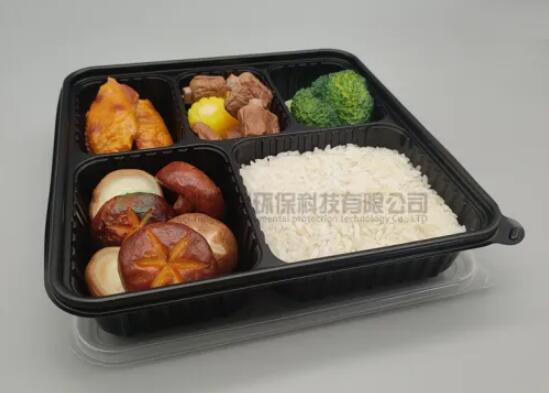Are PP Lunch Boxes Safe for Kids?
When it comes to choosing lunch boxes for kids, safety is always a top priority for parents. Polypropylene (PP) lunch boxes are a popular choice due to their durability, lightweight nature, and affordability. However, questions about their safety, particularly regarding their chemical composition and long-term use, often arise. In this article, we will provide a comprehensive analysis of the safety of PP lunch boxes for children, addressing concerns and providing valuable insights to help you make an informed decision.
What is Polypropylene (PP)? An Overview of the Material
Polypropylene, commonly known as PP, is a thermoplastic polymer widely used in various consumer products. It is derived from petroleum and is considered one of the most versatile plastics due to its strength, resistance to heat, and flexibility. PP is used in a broad range of items, from food containers to clothing and automotive parts.
In the context of lunch boxes, PP is favored because it is durable, easy to clean, and has a high resistance to chemical leaching. But is it safe for kids? Let's delve into the specific concerns that parents have regarding the use of PP lunch boxes for children.

Are PP Lunch Boxes BPA-Free?
One of the most common concerns about plastic food containers is the presence of bisphenol A (BPA). BPA is a chemical compound found in some plastics that has raised health concerns, particularly related to hormone disruption. However, PP lunch boxes are naturally BPA-free. Unlike other plastics such as polycarbonate, which contains BPA, PP does not release harmful chemicals when exposed to heat or wear and tear.
This is a significant factor when considering the safety of a lunch box for children. Parents can rest assured that PP lunch boxes do not pose the risks associated with BPA exposure, such as developmental issues, reproductive problems, or cancer.
Heat Resistance and Leaching Concerns in PP Lunch Boxes
Another common concern regarding plastic lunch boxes is the potential for harmful substances to leach into food when exposed to heat. Some plastics, when heated, can release toxic chemicals that may contaminate food. The good news is that PP is highly resistant to heat. It has a melting point of around 160°C (320°F), making it suitable for storing both cold and warm foods.
However, it is important to note that while PP is heat-resistant, it is not designed for use in the microwave at high temperatures. When microwaving PP containers, it is recommended to avoid using them for foods with high fat or sugar content, as these foods can reach temperatures that may exceed the material's heat resistance. In general, PP lunch boxes can withstand the occasional heat exposure without leaching harmful chemicals into the food.
Are PP Lunch Boxes Environmentally Safe?
Environmental concerns are another factor to consider when choosing lunch boxes for kids. While polypropylene is not as environmentally friendly as materials like glass or stainless steel, it is still a relatively eco-friendly option compared to other plastics. PP is recyclable and, in many regions, can be disposed of through recycling programs.
Despite being recyclable, the widespread use of polypropylene still contributes to plastic waste. Therefore, when using PP lunch boxes, it is essential to recycle them responsibly once they reach the end of their lifespan. This ensures that the environmental impact is minimized, and the material is repurposed effectively.
Are PP Lunch Boxes Durable Enough for Kids?
Durability is another reason why PP lunch boxes are popular among parents. PP is known for its strength and resilience, which makes it ideal for children who may not always handle their lunch boxes with care. PP lunch boxes are resistant to cracking, breaking, or warping under normal use, which means they can endure the bumps, drops, and rough handling often associated with young children.
Additionally, PP lunch boxes are lightweight, making them easy for children to carry. They can withstand the rigors of daily use without becoming damaged, which is a crucial feature when selecting a lunch box for kids.
Easy to Clean and Maintain: A Key Benefit of PP Lunch Boxes
One of the biggest advantages of using PP lunch boxes is their ease of cleaning. PP is non-porous, which means it does not absorb food particles or odors. This makes it much easier to clean than other materials like wood or some metals. Most PP lunch boxes are dishwasher safe, which adds convenience for parents who need to clean them quickly and efficiently.
Additionally, PP lunch boxes typically come with airtight lids, which help prevent leaks and spills. This feature ensures that food stays fresh and that liquids such as soups or juices do not leak out during transportation.
Are PP Lunch Boxes Safe for Hot Foods?
As mentioned earlier, PP lunch boxes are heat-resistant, but precautions should still be taken when packing hot foods. It is essential not to store excessively hot foods, such as freshly cooked meals, directly in a PP lunch box. The heat may cause the container to warp over time or degrade the material.
It is recommended to allow hot foods to cool slightly before placing them in a PP lunch box. This ensures that the food stays at an appropriate temperature without causing any damage to the container.
PP Lunch Boxes and Chemical Safety Standards
PP lunch boxes are subject to rigorous safety standards. In the United States, the Food and Drug Administration (FDA) regulates food-contact materials, including plastics like polypropylene, to ensure that they do not pose a risk to human health. These regulations are designed to protect consumers from harmful chemicals that could leach into food.
PP has been extensively tested for chemical safety and is widely considered to be non-toxic. As long as the lunch box is used according to the manufacturer's guidelines, there is little risk of exposure to harmful chemicals.
Tips for Ensuring the Safety of PP Lunch Boxes
To ensure that your child's PP lunch box remains safe and functional, here are some helpful tips:
Avoid using high temperatures: Do not place hot food directly into a PP lunch box. Allow food to cool slightly before packing it.
Check for damage: Regularly inspect the lunch box for cracks, warps, or damage. A damaged lunch box may become less safe over time.
Clean regularly: Keep the lunch box clean to avoid the buildup of bacteria or mold. Wash it after every use, especially if it's used for perishable foods.
Use in moderation: While PP is safe for everyday use, consider switching to more sustainable alternatives, such as stainless steel or glass, for long-term use.
Conclusion
In conclusion, PP lunch boxes are a safe and practical choice for packing meals for children. They are BPA-free, heat-resistant, durable, and easy to clean, making them a popular option for parents. As long as they are used correctly and maintained properly, PP lunch boxes pose minimal risk to children's health.
However, it is always important to consider the specific needs of your child and choose a lunch box that aligns with your preferences and environmental values. While PP is a safe material, exploring other options like glass or stainless steel might be beneficial for some families.


Comments